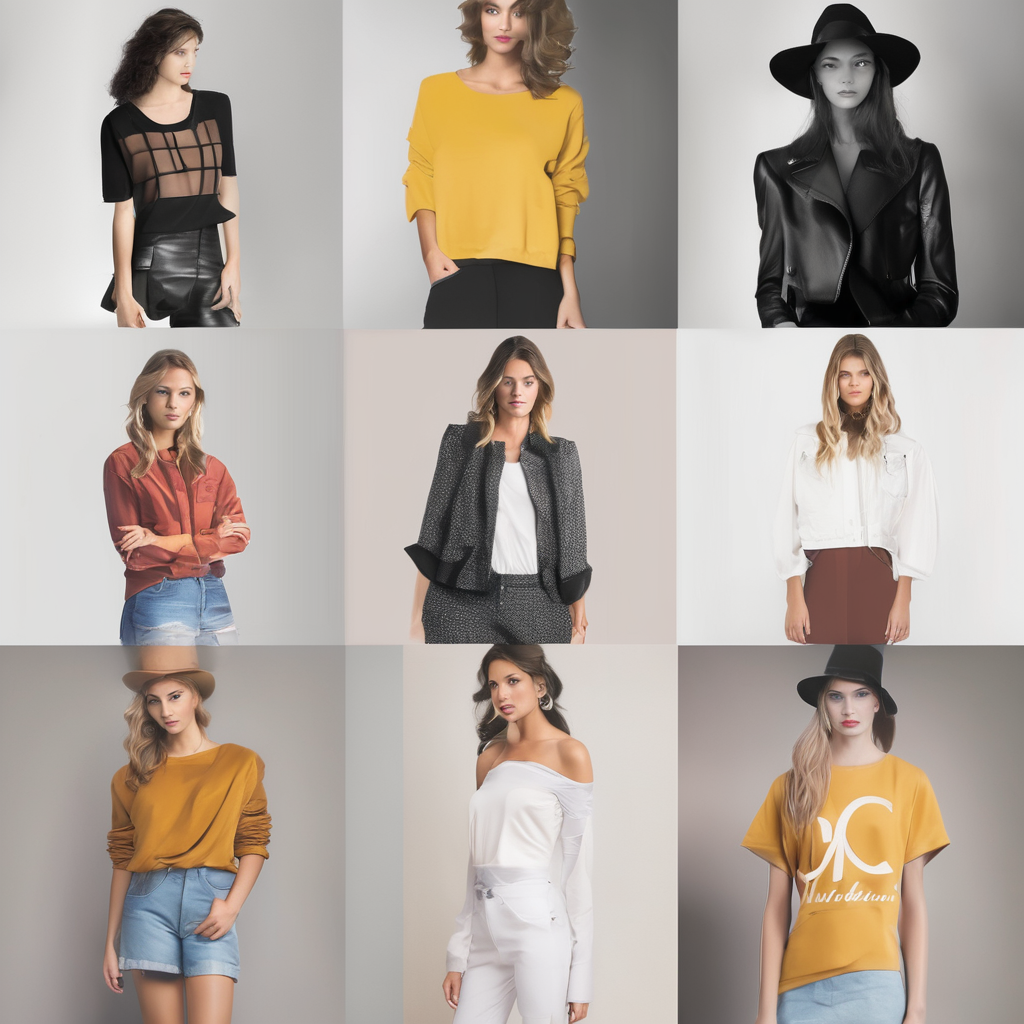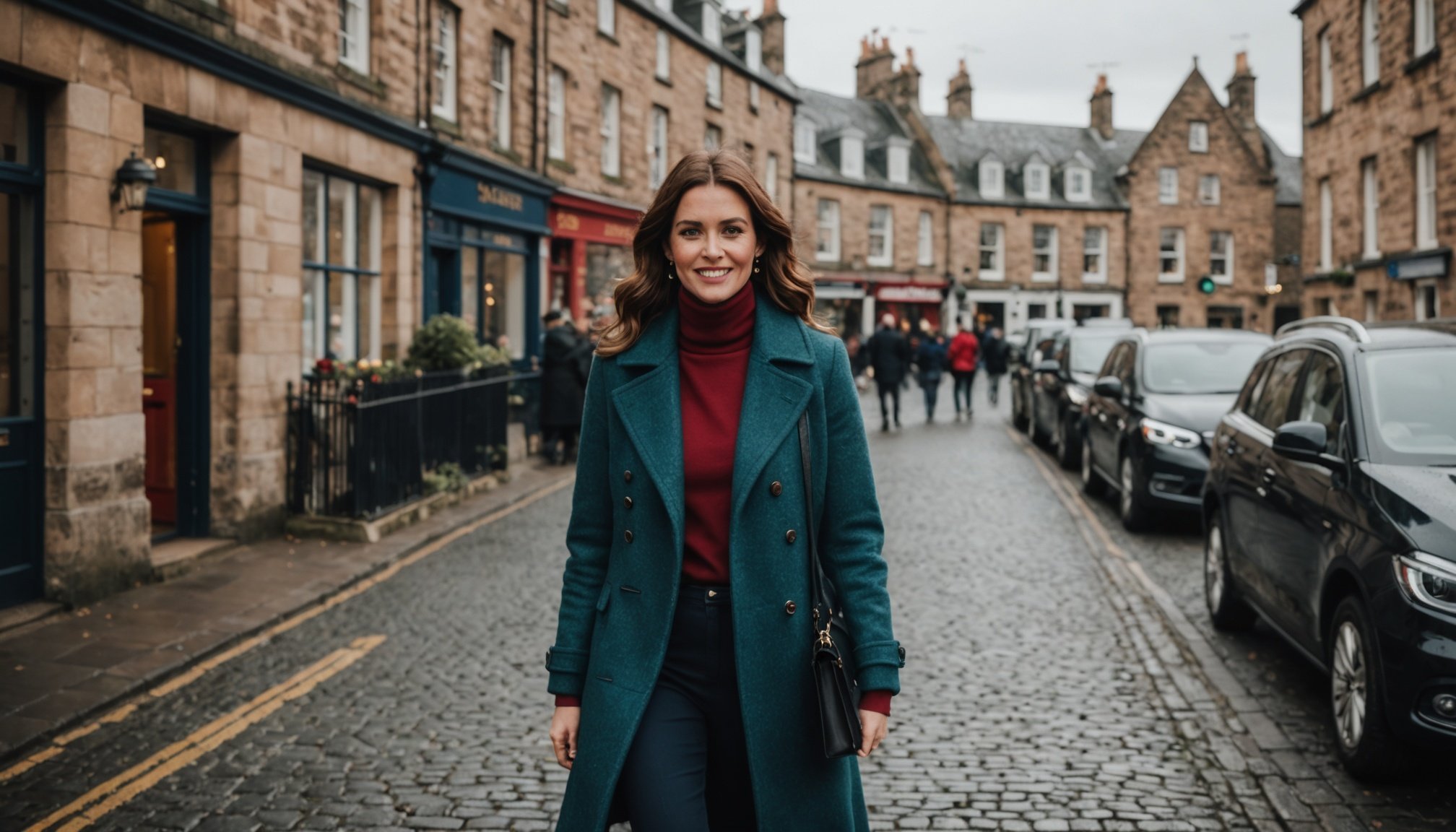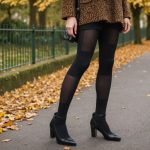Understanding Color Theory for Winter
Understanding color theory is essential when crafting a winter fashion palette. It involves comprehending the difference between warm and cool colors and how they affect our mood and style choices. Warm colors like reds, yellows, and oranges evoke warmth and vibrancy, making them ideal for brightening gloomy winter days. Cool colors such as blues, greens, and purples offer a calming effect, creating a serene and sophisticated look suited for the chillier season.
Selecting a base color for a winter wardrobe requires a strategic approach. A base color acts as the foundation of your style, influencing all other choices in your ensemble. Darker shades like navy, charcoal, or burgundy are often more adaptable and can pair effortlessly with several other hues to form a comprehensive seasonal color analysis.
Also to read : Essential Tips for Choosing Jaw-Dropping Earrings for Your Next Glamorous Event in the UK
Utilizing a color wheel is an effective method to build harmonious outfits. By exploring complementary, analogous, and triadic color schemes, you can develop a well-rounded wardrobe that is both visually appealing and in tune with the season. This practice not only ensures cohesiveness but also encourages creativity in pairing different garments together, elevating your winter fashion to new heights.
Recommended Fabrics for Scottish Winters
Dressing for Scottish winters demands thoughtful choices in winter fabrics. Selecting materials like wool, cashmere, and fleece is crucial for their warmth and breathability. Wool is a classic choice; its natural fibres provide excellent insulation and allow for air circulation, making garments breathable. Cashmere, though more luxurious, offers a lightweight yet highly insulating option, ideal for layering in colder climates. Fleece, a synthetic fabric, is celebrated for its ability to retain heat while remaining lightweight and flexible.
Also to read : The timeless allure of french craftsmanship in luxury fashion
An essential consideration for winter garments is their moisture-wicking properties. Fabrics that can draw moisture away from the skin help maintain warmth and comfort, preventing that uncomfortably damp feeling during wetter days. For effective moisture management, consider materials like Merino wool, which combines moisture-wicking capabilities with softness.
Additionally, combining various fabric textures can create a visually appealing outfit. Mixing textures can add depth and interest to your look. For instance, pairing a woolen sweater with a sleek fleece jacket not only enhances warmth but also adds a sophisticated touch to your attire. Embrace these fabric strategies to navigate Scottish winters with elegance and practicality.
Creating a Cohesive Color Palette
A well-thought-out color palette is crucial for outfit coordination and developing a seasonal style that truly resonates with the spirit of winter. In Scotland, where the landscape is adorned with muted and natural tones, popular color combinations often draw inspiration from these serene settings. Consider hues like deep greens, earthy browns, and rich blues, which echo the picturesque Scottish countryside.
Incorporating prints and patterns without creating clashes requires a delicate touch. Choose a dominant color from your palette and use it to unify various patterns. For example, a plaid scarf featuring subtle green and brown tones pairs seamlessly with a solid green coat.
Neutrals play a vital role in crafting a versatile winter wardrobe. Shades such as grey, beige, and black offer a reliable foundation, allowing you to effortlessly mix and match garments. They also serve as excellent backdrops for vibrant accent colors, adding a pop of personality to your outfits.
Key tips:
- Use a dominant color combination to unify patterns.
- Integrate neutrals for versatility.
- Reflect the Scottish landscape for an authentic touch.
This approach will ensure a cohesive and stylish color palette for your winter wardrobe.
Layering Techniques for Functionality and Style
Mastering layering outfits is essential for both warmth and comfort during winter. The strategy involves three key layers: base, middle, and outer.
Base Layer
The base layer is critical, acting as your second skin. Opt for materials like moisture-wicking synthetics or merino wool to retain comfort and dryness. This layer effectively regulates your body temperature by drawing sweat away from your skin.
Middle Layer
The middle layer is all about insulation. Fleece or puffy down jackets can serve well by trapping heat and maintaining core warmth. Choose fabrics that balance breathability with insulation for maximum efficiency.
Outer Layer
The outer layer shields you from external elements. Windproof and waterproof jackets are ideal, providing protection without compromising on breathability. Select designs that offer freedom of movement, enabling practical and stylish winter activities.
The art of balancing style with functionality in layers requires a keen eye for color and fabric coordination. Utilize neutral tones for versatility and strategic pops of color for added flair. Accessories such as belts can help enhance the silhouette, keeping your layered ensemble chic yet practical.
Accessorizing Your Winter Wardrobe
Accessorizing your winter wardrobe effectively can significantly enhance both warmth and style. Key accessories such as hats, scarves, and gloves are not just functional elements; they also embody the season’s trends.
Selecting accessories in hues that complement your winter fashion palette can make a substantial difference in defining your overall look. For instance, a vibrant scarf can add an unexpected pop of color, injecting energy into an otherwise muted ensemble. Similarly, choosing gloves in a contrasting shade or a patterned hat can provide a focal point that ties the outfit together.
Incorporating seasonal accessory trends like richly textured knitwear can introduce both visual appeal and warmth. Consider accessories crafted from materials like wool or cashmere for their insulating properties. These not only keep you snug but also add a touch of luxury.
Pay attention to detail—cohesive color combinations in accessories can unify a look, ensuring your outfit appears thoughtfully curated. By exploring current trends and integrating these accessory tips, you’ll develop a polished look that not only embraces winter’s chill but also its style opportunities.
Visual Inspiration and Outfit Examples
Delve into a curated collection of visual inspiration that highlights the intricacies of winter styling. Explore vibrant outfit examples that harmonise with the seasonal color schemes discussed earlier, serving as a guide for your own wardrobe creations.
Winter Color Palettes
The curated color swatches present an array of palettes that resonate with the essence of winter. Imagine deep blues paired with earthy tones like rich browns and forest greens, mirroring the tranquil Scottish countryside. These combinations not only echo the natural landscape, adding authenticity, but also offer endless styling possibilities.
Outfit Examples
Consider a layered ensemble consisting of a navy coat over a moss-green sweater, complemented by a burgundy scarf. This not only exemplifies the color theory principles but also showcases effective layering for warmth and style. Or, picture an outfit featuring a charcoal overcoat matched with a plaid scarf, combining texture and color effortlessly for a visually striking yet functional look.
Visual Aids for Wardrobe Choices
Using visuals, such as mood boards or fashion apps, can be an invaluable tool for inspiration. These resources help in coordinating pieces and colours effectively, enhancing your personal style journey with creativity and precision.











